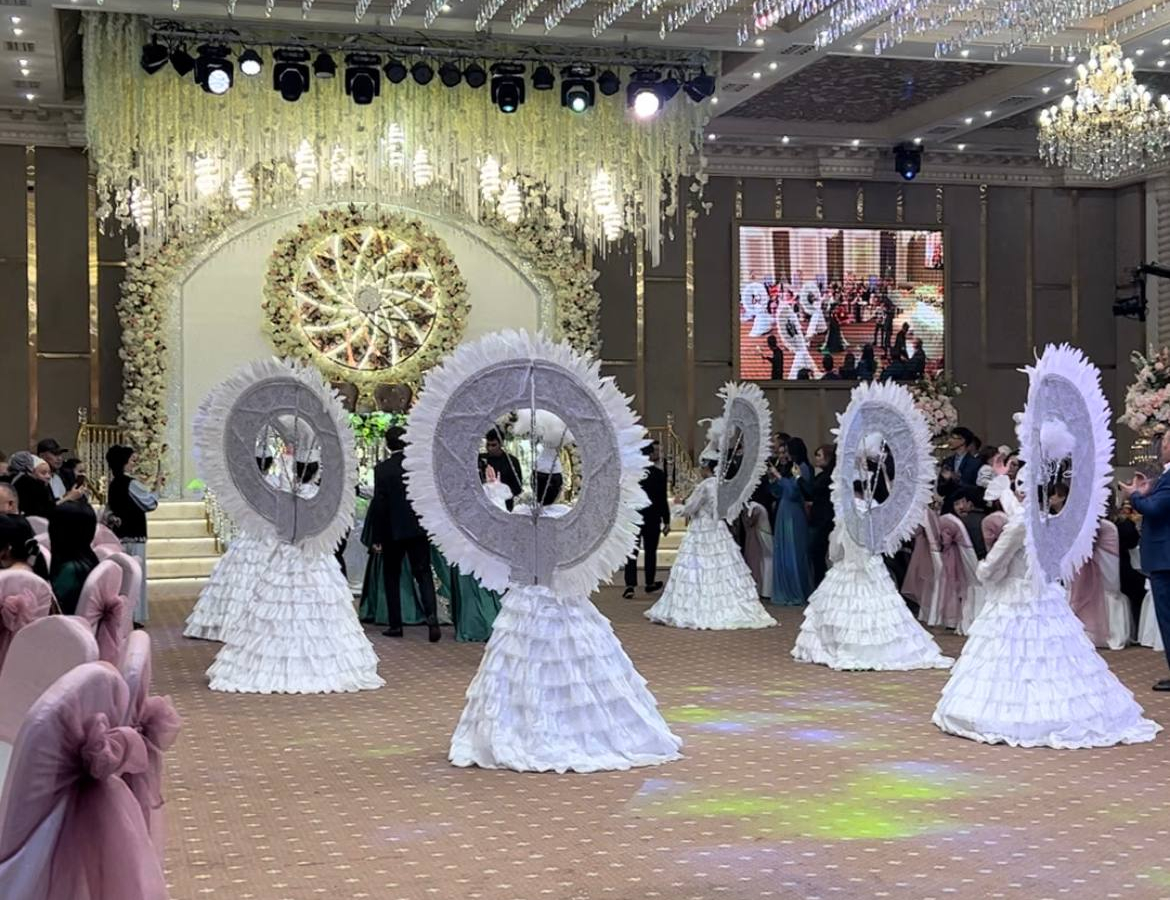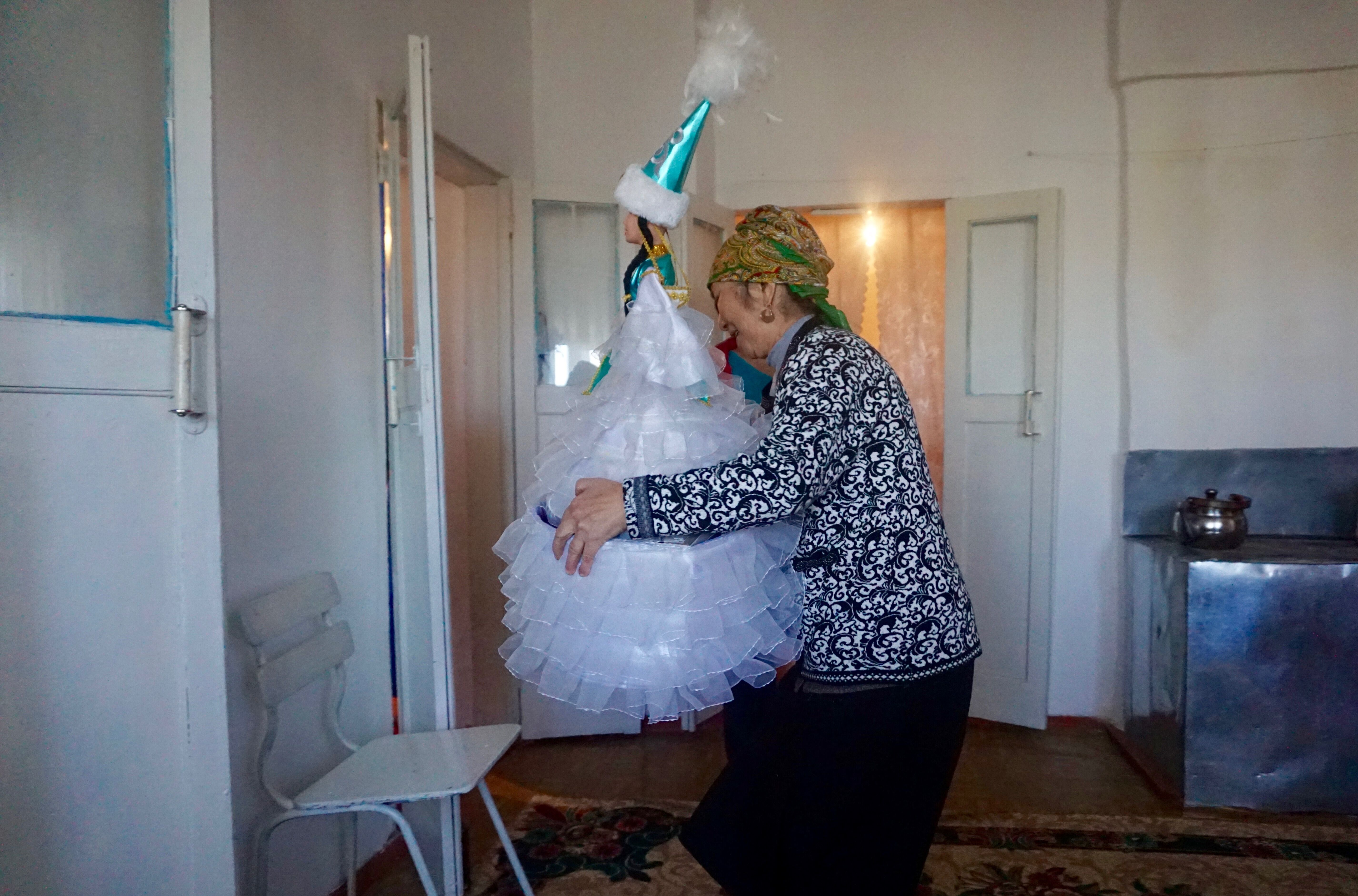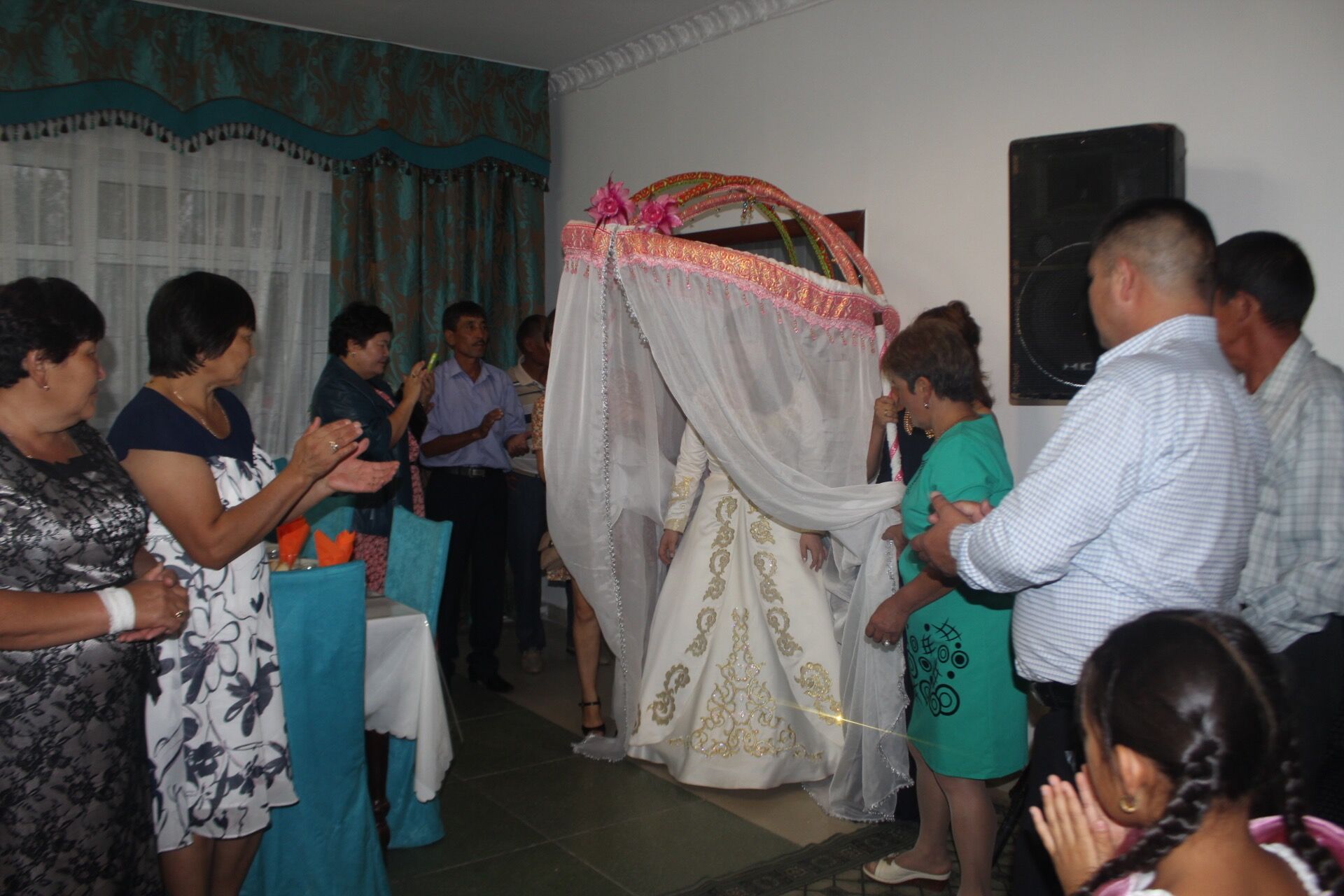- ВКонтакте
- РћРТвЂВВВВВВВВнокласснРСвЂВВВВВВВВРєРСвЂВВВВВВВВ
Anthropologists Dinara Abildenova and Zarina Adambussinova have studied the “toi” industry in small towns in two regions of Kazakhstan. “Toi”, in Kazakh, is a general term for an organized feast, such as a wedding, or a birthday, or an anniversary (we will not pluralize the noun throughout the text). The researchers say the business related to toi events have become one of the few ways for residents of small towns to make a living, in the absence of proper employment programs.
The modern understanding of the Kazakh word “toi” encompasses much more than the traditional celebration of certain stages of a person’s life (birth, first steps, reaching school age, marriage), but also jubilees and other professional or family milestones. Toi celebrations have been heavily criticized, especially weddings deemed to be too large and too expensive. These lush feasts, in fact, are often paid for with loans, because they host hundreds of people in restaurants, rent limousines, set up concert-like entertainment, hire an “army” of photographers. But why does this happen?
Toi is a whole industry. For some people this business might be the only income, for some, a much needed additional source of cash. Either way, the toi business lies at the intersection between the formal and informal economy. For this article, we visited two regions: Zhetysu (total population: 698,700) and Zhambyl (total population: 1,216,000).
Zhetysu and Zhambyl are predominantly agricultural regions (in Zhambyl, the chemical industry is also an important economic sector). But not everyone has access to jobs in these sectors. According to Forbes.kz’s Regional Competitiveness Index, both regions show a high proportion of self-employed residents. After the regional capitals of Taraz and Taldykorgan, the largest urban settlements are dwindling single-industry towns (also known as monotowns), where unemployment is rampant. Examples of this trend are the monotowns of Zhanatas and Karatau in Zhambyl and Tekeli in Zhetysu. For the locals who are unemployed or underemployed, therefore, the toi industry is an opportunity to make ends meet and feed their families.
During fieldwork in the Zhetysu region, some toastmasters were afraid to answer our questions. They thought we were sent by the tax office to check that everything was in order. In most cases, the toastmaster job is a second occupation, alongside their main employment in, say, civil service. Most, however, do not register as individual entrepreneurs in order to make their toastmaster job official. This also applies to local businessmen profiting from the toi business.
In Zhambyl, the toi industry has also become an informal lending mechanism. One of our informants said that if one needs, for example, to carry out house repairs or solve a household financial issue, they can organize a toi. A man who wanted to finish building a house would say: “I will have a toi, recover the expenses, and finish building my house.”
A toi for 150 to 450 guests (always including guests from big cities) in towns with 25,000 inhabitants costs an average of 1 to 1.5 million tenge ($2,200 to $3,400). The organizer can order most of the services related to the toi either on credit or with an oral promise of repayment. After holding a toi, the organizer collects an average of 2 million tenge ($4,400), which allows them to repay any loans or debts and make a small profit as well. The “gift economy” as investigated by American anthropologist Cynthia Werner, in fact, maintains a rule: you cannot give a gift valued less than the gift you once received.
In Zhetysu, however, toi celebrations do not always bring in additional income for the organizers. In some cases, the revenue is only enough to cover the expenses. In both regions, parents organize a toi for their children in an attempt to recoup the cost of their presents. If the goal is to make a profit, the social circle around the organizer and their active role in other toi celebrations becomes crucial.
A resident of Zhanatas told us: “For us Kazakhs, a toi is a kazyna (Kazakh for “treasure”, ed.). After you’ve attended several, you can also host your own. Of course there are some people who don’t interact with many other people, but this didn’t happen here. People check how much they spent and how much they got back.”
In Zhambyl, during each toi, one of the organizer’s relatives usually keeps a record of who and how much they donated in a special notebook. In some cases, donors write their names in gift envelopes. In this context, a monetary gift is essentially a zero-interest loan, with a moral obligation to be returned.
In monotowns, a toi is also a source of entertainment, a Zhanatas source told us.
During a toi, furthermore, people exchange news, maintain social ties with distant relatives and the community, and make new acquaintances.
Toi celebrations are at the nexus between formal and informal institutions, as understood by the New Institutional Economics school. Traditions, customs, and informal economic relationships make up the informal (or social) institutions, whereas the formal ones comprise contracts, regulations, the Constitution.
The development of the market economy and the economic boom of the 2000s led to toi being celebrated in restaurants. Previously, these celebrations were held at home, or in yurt tents in the backyard, or in school canteens.
During an interview, Anel from Zhanatas recalled the celebration of her wedding: “We arrived at the registry office in a Zhiguli (an old Soviet car, ed.), there were no limousines back then. One or two Zhiguli and that's it! Only the newlyweds came by car, the rest of the guests came on foot. The wedding was celebrated in the courtyard of our house, we set up three long tables.”
The shape and the size of the gifts changed as well. Bringing an envelope with cash is now more desirable than the old-fashioned gift of a carpet. Moreover, the tradition of paying a “bride price” in cattle has now been substituted by cash payments, most often in US dollar bills.
Notably, each region has their own rules regarding the size of the bride price and gifts. Residents of Zhetysu said: “In our region, the bride price is one horse. If the newlyweds are from the same village, then the groom gives the bride’s family a horse. If they are from afar, then the bride price is usually paid with a monetary equivalent.” According to local residents, this measure of payment keeps up with inflation and allows for significant changes, according to the age and the breed of the horse.
In Zhambyl, the gifted amount varies depending on kinship: close relatives would pay at least 40,000 tenge (around $90), distant relatives can settle at 20,000 tenge (around $45), while colleagues and friends can pay as little as 5,000 tenge ($12).
Carrying out the uzatu-toi (a kind of farewell to the bride celebration) in restaurants represented an important change in traditions. In the late 1980s and throughout the 1990s, marriage by kidnapping (in Kazakh, ‘alyp qashu’) was popular and the bride’s farewell was rarely held at her home. But an improved economic situation later prompted families to show off their status. Thus, a marriage by kidnapping came to be associated with financial trouble on the bride’s side. By holding an uzatu-toi, the two sides now establish an even financial relationship.
The modern Kazakh toi also revives the conversation about old and forgotten national traditions. While people who practice these rituals consider them a return to original customs, in reality, most of these rituals are created and even invented by toi organizers.
One example is that in today’s uzatu, carried out in restaurant halls, the bride should be picked up before midnight. This is a strategy set by the restaurant in order to have the time to clean up and set the tables for the celebrations scheduled for the following morning, especially during the busy toi seasons (summer and autumn).
The restaurant hall designated for toi (in Kazakh, ‘toikhana’) can be considered a separate phenomenon of the toi industry. Not just a space with catering, the toikhana is a turnkey facility for family celebrations, providing a wide range of services. Besides being a key employer for the toi industry, the toikhana also sets the trends in celebratory rituals, including the menu.
Toikhana halls have spread to every corner of the country, even in remote villages. In towns of 25,000 people such as Zhanatas or Kordai (at the border with Kyrgyzstan), there are at least three large toikhana halls. In the village of Saryozek, with a population of only 12,000, seven out of 12 restaurants are registered exclusively as toikhana halls. In some cases, these restaurant halls are built from scratch, while sometimes they are located in former Soviet administrative buildings.
The toastmaster, singers, dancers, musicians, photographers, hairdressers, make-up artists, seamstresses, and drivers are the main protagonists at toi celebrations. And for each bit of clothing or performance, there are even more services to book. The scale of the celebration and the variety of guests, gifts, and services all depend on the package that the organizers buy. Local business people said the range can vary from “economy class” to “VIP”. Wealthier families can afford to organize toi in administrative centers and regional capitals, while only the wealthiest can plan for a toi in large cities such as Shymkent or Almaty.
In the context of peripheral towns, the toi business is not a mere revival of old traditions. In fact, it has come to represent a way for local populations to adapt to a changing economic system. The thriving toi business is a prism through which it is possible to read the complexities of the present, namely chronic unemployment, underdeveloped infrastructure, and strategies of survival under capitalism.
This article was originally published in Russian. This is an edited version. This one is part of several stories published by Vlast as part of “Regions of Kazakhstan”, a project that explores the various manifestations of inequality between the regions and large cities of Kazakhstan.
Поддержите журналистику, которой доверяют.










